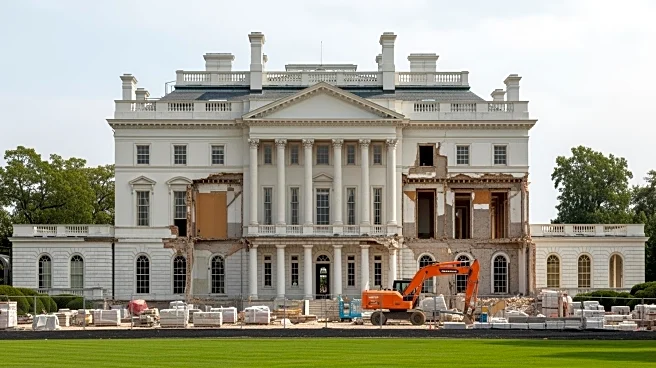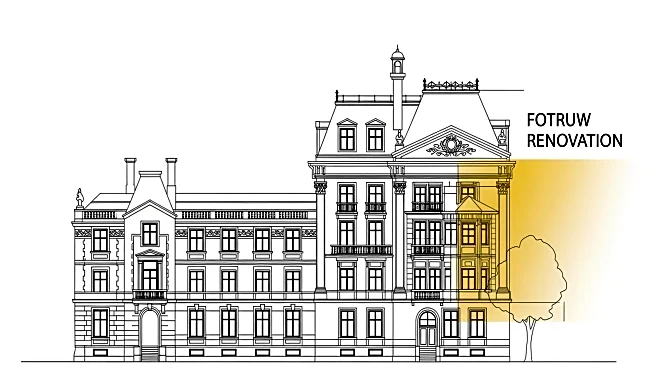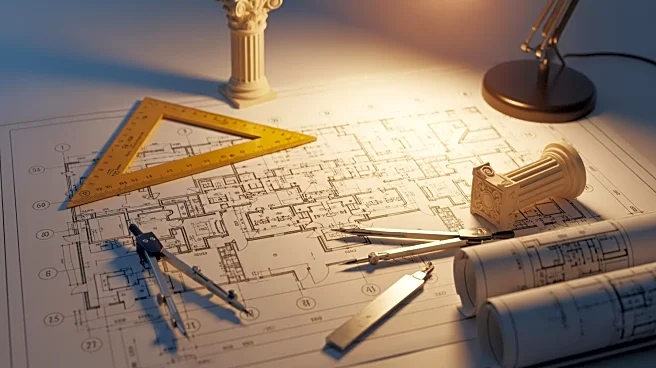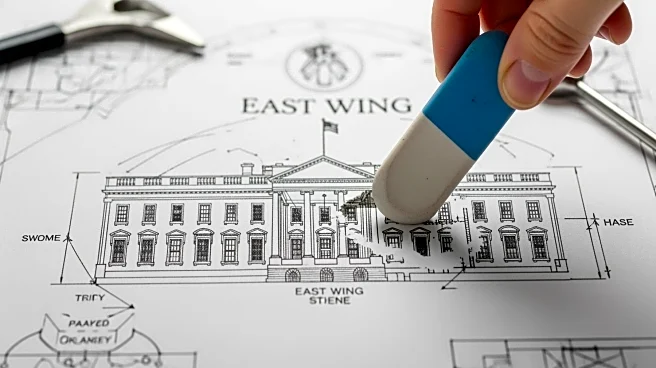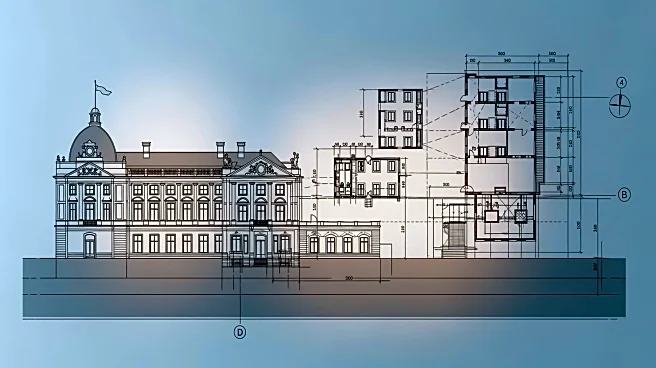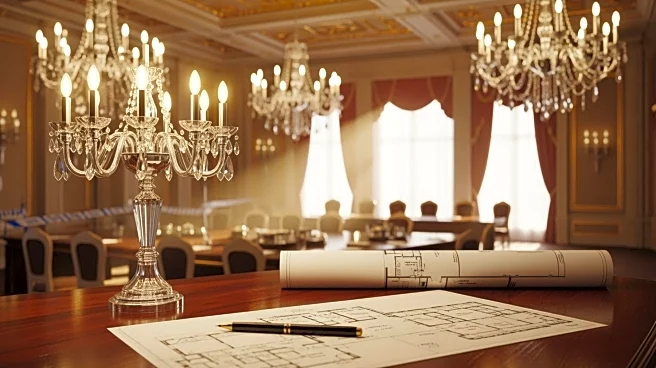What's Happening?
The East Wing of the White House has been demolished to make way for a new ballroom, as confirmed by a White House official. The demolition included the East Terrace, which housed the White House movie
theater, set to be rebuilt. President Trump announced that the decision to demolish the existing structure was made after extensive study by top architects. The project, initially estimated at $200 million, is now expected to cost $300 million, funded entirely by donors, including President Trump himself. The new ballroom is intended to be a premier venue, with no cost to taxpayers.
Why It's Important?
The demolition and construction of a new ballroom at the White House represent a significant architectural and historical change. This development underscores the administration's focus on enhancing the White House's facilities, potentially impacting its historical integrity. The funding model, relying on private donations, highlights a shift in how such projects may be financed, raising questions about transparency and donor influence. The project could set a precedent for future renovations at government buildings, influencing public policy on funding and preservation.
What's Next?
As the construction progresses, further details about the ballroom's design and features are expected to be released. The administration may face scrutiny regarding the project's escalating costs and donor contributions. The completion of the ballroom could lead to increased use of the White House for official events, potentially affecting its role in diplomatic and political activities. Stakeholders, including preservationists and political leaders, may react to the changes, influencing future decisions on White House renovations.
Beyond the Headlines
The demolition of the East Wing raises ethical and cultural considerations about preserving historical sites. The decision to prioritize new construction over existing structures may spark debate about the balance between modernization and historical preservation. This development could influence public perception of the administration's priorities and its approach to managing national heritage sites.
